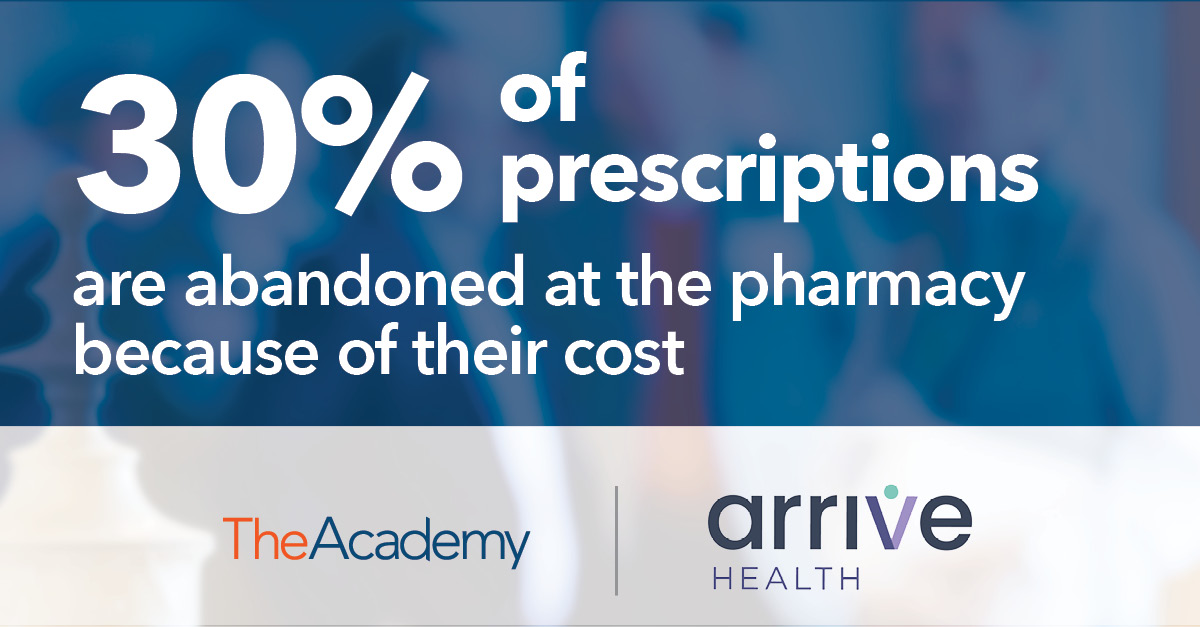Imagine this scenario: A provider prescribes a necessary medication, and the patient attempts to fill it at the pharmacy. When they get to the counter, they realize the medication is unexpectedly expensive, and they can’t afford to purchase it. Unfortunately, this is not an uncommon occurrence, as more than 30% of prescriptions are abandoned at the pharmacy because of their cost.

This lack of upfront price transparency results in:
- Frustration with drug costs and payment complexities
- Non-adherence to medication and care plans
- Lack of faith in both the provider and health system
We know that PBMs, health plans, and providers have made progress on price transparency for their patients. But despite well-intended steps to support consumer choice and affordability, patients still can’t access the information they need to make informed healthcare decisions.
This is undoubtedly not the patient-centric experience to which we aspire. And what is perhaps most unfortunate is that this scenario is often avoidable.
Affordable options exist, the patient just doesn’t know it
Where’s the disconnect?
According to an Arrive Health analysis of more than 52 million prescription transactions between PBMs and ePrescribing workflows, 47% of the time, the patient’s formulary includes a comparable medication that is free to the patient. However, due to a multitude of system complexities, the low- and no-cost options aren’t always displayed to providers – which means they’re not offered to patients.
Patients end up avoiding excessive costs by forgoing care altogether. This domino effect leads to worse outcomes for patients and higher costs for the entire healthcare system. Research has found that medication non-adherence accounts for up to 50% of treatment failures, 125,000 deaths, and 25% of hospitalizations each year in the U.S.
Example scenario: how price transparency can save patients money
Let’s take the antidepressant class Norepinephrine and Dopamine Reuptake Inhibitors (NDRIs). Based on transactions in the Arrive Health network:
- $11.54: Average price per day of the requested medication
- $0.28: Average alternative price per day of the requested medication
- $4,051: Potential annual savings
So, what’s the path forward?
PBMs and health plans are supplying mountains of data, but this abundance of convoluted information does not support patients in understanding their financial responsibility. What we need most is a way to clearly and succinctly present prescription options to patients so they can understand the costs before receiving treatment.
Since cost is a contributing factor to adherence and outcomes, providers need to include affordability – in addition to side effects, administration routes, and dosage regimens – when developing care plans with patients.
“In today’s world, the burden of finding a lower cost option falls to the patient, often without the support of their provider. The goal should be to give the provider the necessary information so that at the end of the encounter, they can have a relevant and actionable discussion with the patient. And, ultimately, help the patient become an informed healthcare consumer.”
– Christie Callahan, COO, Arrive Health
Price transparency benefits all stakeholders
This is a rare opportunity in healthcare. Addressing price transparency as a consumer strategy enables providers to better support their patients and improves overall patient care. And when that leads to better outcomes, it’s also fiscally beneficial for health systems, health plans, and PBMs.
Partners like Arrive Health give providers—and patients—the tools needed to holistically understand care options. These solutions enable providers to consider clinical information alongside financial information, while removing noise from decision-making workflows. This supports patients’ ability to make informed decisions, which in turn enables them to adhere to their care plans.
To learn more, check out Part 2, Part 3, and Part 4 of this blog series.


